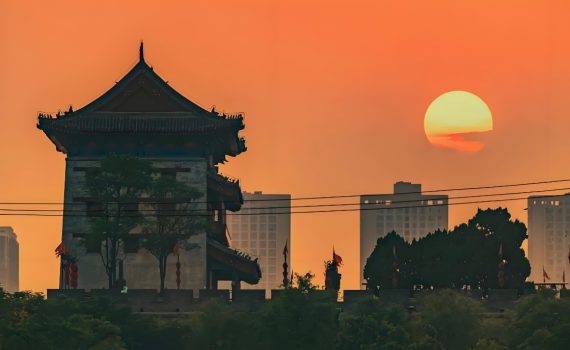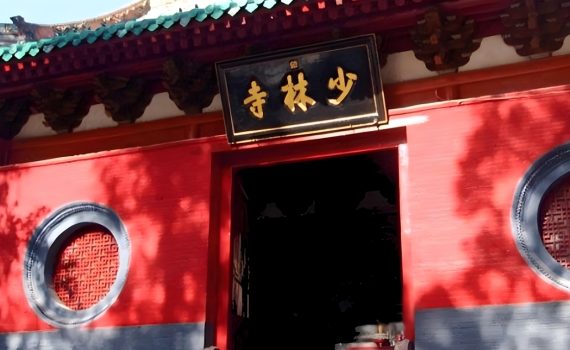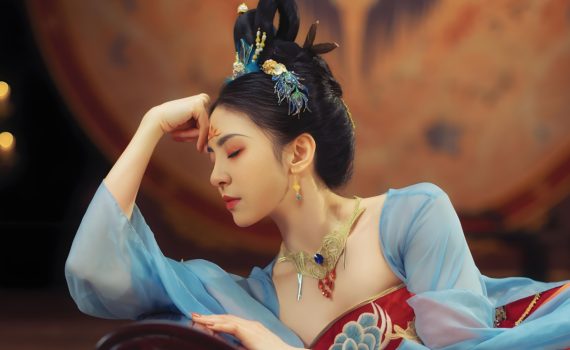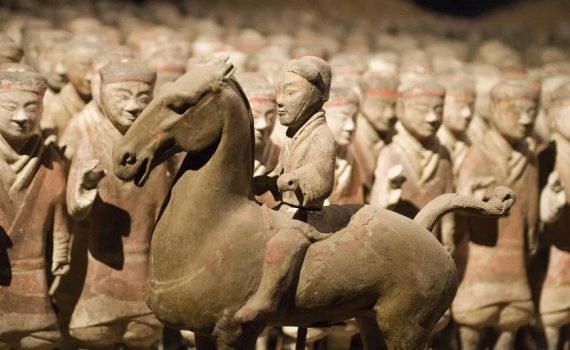Book a private transfer to Terra Cotta Army Museum Facts Should Know Before you go Terracotta Army Museum, which is also a UNESCO World Heritage Site, is located in the Lintong District, Xi’an, China. The army sculptures were meant to protect the first Emperor of China, named Qin Shi Huang, in his afterlife after his burial. The army was initially buried and forgotten for hundreds of years; until it was discovered in 1974 by farmers digging a well. The sculptures include sculptures of army generals, warriors, horses, and even chariots. Although the collection is known to depict an army, there are other figures as well, which include musicians, officials, strongmen, and even acrobats. The soldiers and other sculptures buried with the Emperor are made of clay, but they are based on real warriors. In total, more than 8,000 soldiers were buried with the emperor to watch over him in his afterlife. The Emperor rose to power when he was only 13 years old. After taking the throne, he ordered this project, which took nearly 40 years to complete. He ruled from 247 BC to 210 BC. Seeing this ambitious collection of artworks is an experience most people will live to […]
Things to do in Xi’an
The Qianling Mausoleum is a tomb site of the Dynasty of Tang and it is in Qian County, Shaanxi province, China. The mausoleum is 53 miles northwest of Xian which was formerly known as Chang’an and it is the Tang capital. The actual date that the mausoleum was built is about 618 and it represents one of the Chinese historical landmarks. The main tombs are those of Emperor known as Gaozong and Wu Zetian who was the empress. It is the only tomb that an emperor is sharing with his wife but this is attributed to that the empress became the ruler after her husband’s death. The entire site of the mausoleum covers an area of 0.88 square miles and has a total of 124 sculptures made of stone. The southern approach of the mausoleum is lined with sculptures of both people and animals. The most prominent animals are ostriches, horses, winged horses and lions. The animals are an indicator of how prominent the emperor and his wife were when they ruled China. In the mausoleum there are also different buildings which include a pavilion, a sacrifice hall, a hall of ministers and different corridors. Most of the structures and […]
Acting on Zhu Sheng’s advice after capturing Huizhou, Zhu Yuanzhang, first ruler and Emperor of all-powerful Ming Dynasty, built the historic and epic Xi’an City wall to help provide the much-needed security during the war-prone era. Building these ‘high walls’ was also in an effort to fortify the city, thereby bringing the rest of the states together. The wall has survived several centuries and remains one of the world’s most extensive traditional military defense systems. Not only is the wall one of the best preserved, but also the largest and oldest in the country. Erected during the 14th century, it has undergone refurbishment thrice, about once every 2 centuries, and most recently in the early 1980s. The wall harbors four main gates that helped to provide access to the town during the ancient times, with sentries on towers overlooking each gate. In addition, a large part of the city features a wide moat stretching around the historic walls, with huge drawbridges used to cut links when lifted, thereby controlling access to and from this city. This perimeter wall is best covered while cycling, as this allows tourists to explore the old city faster. The majestic Xi’an City wall features flanking […]
The Shaolin temple is no doubt one of the beautiful temples in China. There are thousands of travelers love to visit Shaolin temple not only for the natural beauty but also the historical image. But the problem is the majority of the people does not know the ways of visiting Shaolin temple, especially from the xi’an. Here i will discuss the ways of just how to get to the Shaolin temple from xi’an. If you are now at xi’an and want to visit Shaolin temple then the best solution for the traveler will be using public transportation. The distance from xi’an to Shaolin temple is around 448 Km. It will normally take 5-6 hours to reach Shaolin temple through the public transportation. You will be able to get direct bus service from xi’an to Shaolin temple all day long. So, you never need to be worried as the buss will stop exactly at your destination. If you do not love bus journey then you have another comfortable option. You can use the train for visiting Shaolin temple from xi’an. There is no doubt that the train journey will be much more comfortable compared to bus journey but the problem is […]
Xian has for quite some time been among the most grounded impacts on arts in China. Xian was the capital of the Tang Dynasty, which was viewed as the Golden Age of Chinese culture. When you visit Xian, you have the chance to back more than a thousand years to the Tang Dynasty at the Tang Dynasty Dinner and Dancing Show Xian and see the apex of Chinese art in real life. The show has been going since 1981, and it has turned out to be one of the must do things after visiting Xian. It is exceptionally well known to travelers and reliably influences it into the main ten attractions to list for Xian. When you visit the show, you are in for fun and exciting out the night. Several Tang Dynasty exhibitions are accessible at night around Xian. Normally the night starts with a meal feast, and this is then followed by the music and dancing exhibitions. Remember to carry your camera to catch the astonishing sleeves of the outfits and the splendidly colored ensembles that move quickly over the stage. The Tang Dynasty was in charge from 618 – 907 A. D, and amid this time social […]
The Xianyang museum is one of the most famous local museums in China. It’s strategically located in Xianyang City, along Zhongshang street. The Xianyang museum was a Confucian Temple up to 1962 when it was opened to the general public after its renovation and expansion. Amazingly, the museum has maintained the temple look for the many years and is well known for its Terracotta Army artifacts, lots of art, and the bronze vessels. The museum covers about 1100sq and is strategically located about 17 miles from Xi’an, which was then the Qin Empire’ capital city, that is, between 221BC and 206BC, and the primary area for the Han Dynasty between 206BC and 220BC. The Han Dynasty used Xianyang Museum as their Mausoleum, where they buried all the dead. This contributed to the discovery of the best artifacts from the royal graves and the destructions of Xianyang City. Apart from all these, the museum holds the best cultural monuments of both the Han Dynasty and the Qin Dynasty which were discovered from the Xi’an Xianyang City. The Xianyang Museum stars 9 exposition halls, with each hall hosting real-life reserves. The 9 halls are divided into the following 4 parts: – Exhibition […]
The Hanyangling Tomb and Museum, situated near Xi’an in China, is an extraordinary site that provides visitors with a one-of-a-kind opportunity to explore the Han Dynasty. This impressive archaeological complex houses the final resting place of Emperor Jingdi and his empress. Within its grounds, visitors can explore a museum filled with a remarkable collection of historical artifacts and captivating exhibits. Discover the fascinating world of the Hanyangling Tomb and Museum as we delve into its rich history, highlight its key attractions, and showcase the exciting activities that await visitors. Greetings The Hanyangling Tomb and Museum, also referred to as the Yang Mausoleum of Han, holds immense historical and cultural importance. Situated approximately 20 kilometers north of Xi’an, this mausoleum complex has a rich history that traces back to the Western Han Dynasty (206 BCE – 9 CE). It is a significant burial site where Emperor Jingdi and his wife, Empress Wang, were laid to rest. Discover the fascinating world of the Han Dynasty on this site, where you can delve into their rich heritage through a collection of well-preserved artifacts, learn about their unique burial practices, and admire the advanced museum displays. When you visit the Hanyangling Tomb and Museum, […]







